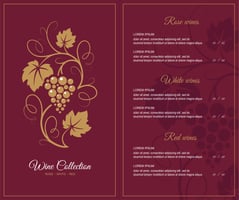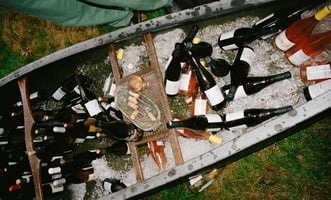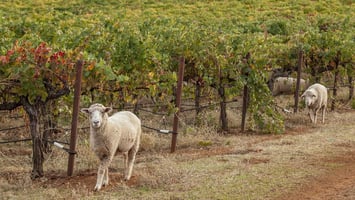Discover the impact of premium wine selection on restaurant revenue and customer satisfaction.
The History and Processes That Make The Champagne of Today

Glorious champagne, and no, not the region in France. Really, their process of making that bubbly wine we all love and adore. But what makes champagne so special? And what separates it from others, making it not just a sparkling wine, but something worthy of its name sake? Well, the story goes back to its creation, particularly of the Méthode Champenoise or the Traditional Method.
The History of Bubbly Wine
Like much of wine history, the origin of sparkling wine is questioned and contested. It’s believed that sparkling wine originated in Languedoc, France–not Champagne–where the oldest sparkling wine, the Blanquette de Limoux, was made. The wine is said to have been pioneered by the Benedictine monks of Saint-Hilaire, who accidentally bottled it before fermentation had finished, trapping CO2 in the wine.
This process, originally called the Méthode Rurale, but now known as the Méthode Ancestrale or the ancestrale method, dates back to as early as 1531 based on writing from the Saint-Hilaire monks. This process preceded the Méthode Champenoise/Traditional Method by around 130 years, when in 1662, Christopher Merret submitted a paper to the British Royal Society outlining the process of making carbonated wine by adding sugar and molasses into the bottle to set off a second fermentation.
Often, Benedictine monk Dom Perignon, who lived in Champagne, is cited as being the creator of the Traditional Method, with the story being he encountered sparkling wine at the Abbey of Hautvilliers around the end of 17th century and made it his mission to re-create it. Although this story is contested, and not only because of Merret’s paper.
Perignon, who dedicated his life to winemaking, may have actually spent the majority of his time trying to keep bubbles out of his wine. As Champagne experienced warm summers and cold winters, the cold weather would halt the fermentation process until the warm spring; causing a second fermentation in the bottle. The result would be bubbly wine and exploding bottles, as the thin glass bottles of the French couldn’t withstand the pressure of carbonation. What Perignon did create was the use of cork stoppers instead of wood and thicker English glass bottles to keep his wines from exploding. Plus, Perignon passed in 1715 before any commercial production began.
Since the bubbles in wine were seen more as a mistake rather than a purposeful addition, it wasn’t until the frizzy drink became popular among French royalty that demand for sparkling wine started rolling in. This includes the Duke of Orléans, who played a major role in popularizing champagne when he began drinking the bubbly wine every night–making it the drink of choice amongst French elites in the early 18th century. Finally, in 1729, the older champagne house, Ruinart was founded. But, it wasn’t until the later half of the 18th century when the process of riddling bottles was invented by Madame Clicquot.
Since the bubbles in wine were seen more as a mistake rather than a purposeful addition, it wasn’t until the frizzy drink became popular among French royalty that demand for sparkling wine started rolling in. The French King, Hugh Capet, served champagne at official Royal dinners as well as the Duke of Orléans making it the drink of choice amongst French elites by the early 18th century. Finally, in 1729, the older champagne house, Ruinart was founded. But, it wasn’t until the later half of the 18th century when the process of riddling bottles was invented by Madame Clicquot, who founded her winery Veuve Clicquot in Champagne in 1772.
So even while the first process was founded by Merret, it can be argued no single person created the Méthode Champenoise. Instead, the method properly evolved over years of experimentation. But still, it’s championed and claimed by Champagne, France–since only sparkling wines made in the region can claim they were made via the Méthode Champenoise.
Breaking Down The Méthode Champenoise
%20(1).png?width=428&height=428&name=Untitled%20(1080%20x%201080%20px)%20(1).png)
The Méthode Champenoise has seven intricate steps. Like all wines, grapes start in the vineyard, but what follows are the unique processes that make Champagne’s sparkling wines so special
1. Harvest & Press
Grapes are harvested, destemmed, and gently pressed so no excess color or tannin is extracted. A first fermentation occurs either in stainless steel or oak barrels. This creates a base wine for blending.
2. Blend
Often, Champagne is a mix of a base wine with other grapes from various vineyards and vintages, creating a cuveé. By blending from a large selection, wineries are able to curate a “house style” that is typical of the Champagne region. Though, there are some wines made of a single vintage or single vineyard to express the qualities of the particular region.
3. Tirage
In preparation for the secondary fermentation, the blended wines are filled into bottles (a tirage). The secondary fermentation is initiated by a “liqueur de tirage,” which the winemaking prepares by mixing the cuveé with a small amount of sugar and yeast before sealing the bottles.
4. Secondary Fermentation
Also called “bottle fermentation,” this is the process that makes Champagne the sparkling wine that we know. Occurring over a six to eight week period, the yeast consumes the sugar that was added during the tirage, creating CO2 (the tiny bubbles in sparkling wine) and boosts the alcohol content. After fermentation is completed, the yeast leaves behind sediment called “lees” and breaks down in a process called yeast autolysis that lasts either months or years depending on the winermaker; this creates the complex bready/biscuit flavor within the wine.
5. Riddling
In order to remove the remaining yeast sediment, the bottles are slowly turned so the yeast gently slides up to the neck of the bottle.
6. Disgorging
To finally extract the lees, the neck of the bottle is either frozen or submerged in an ice bath before being placed up right. The cap is then removed, ejecting the sediment out of the bottle.
7. Dosage & Final Bottling
Winemakers have one last chance to influence the flavor before the final bottling by adding a mixture of wine and sugar through a process called dosage. Often, this includes the addition of sulfur dioxide for preservation. Afterwards, the bottle is corked and secured with a wire cage until it’s ready to be popped and enjoyed.
Champagne Today
While many wineries in Champagne follow these traditional winemaking steps, there are untraditional processes that sneak through to make a winery stand out from the rest. For some wineries, it comes down to their fermentation process, for others, it’s their barrel choice.
The practice of wild fermentation (or native yeast), which is often claimed by natural wine makers, is when wineries use the natural yeast found on grape skins to kick off the wine’s fermentation process. While some champagne makers may choose to use native yeast for the first fermentation, it’s often difficult to achieve for the second fermentation. Both because it’s hard to control and hard to make, many wineries instead opt to use an external yeast such as saccharomyces cerevisiae to kick off a secondary fermentation. But, winemakers, such as Champagne André Beaufort, continue to test the possibilities; Beauforst has been experimenting with native yeasts in champagne's second fermentation since the 1970s.%20(2).png?width=316&height=379&name=Untitled%20(1080%20x%201080%20px)%20(2).png)
Beaufort practices what is best described as a pied de cuve, or starter yeast. The process is started by picking a small batch of grapes about a week before the remaining grapes are picked, which are then crushed to begin fermenting. This allows a build up of native yeast which is later added to the whole batch of wine, in Beaufort’s case, during the second fermentation. It’s not entirely clear what grapes Beaufort uses or if additions such as wild plants are added to enhance natural flavors, but these wines are tried and true for using native yeast during the second fermentation.
But sometimes winemaking can go even further, such as biodynamic winery Champagne Leclerc Briant and their 24ct gold barrels. Through a multi-aging and fermentation process, their wine is matured in three different vessels, oak, terracotta, and gold. The Champagne house claimed in 2019 in an interview with The Drinks Business that the metal’s unique solar properties will improve the wine by increasing “the level of solar activity during the first fermentation.” Briant also mentioned gold's connection with cosmic activity–an important element of biodynamic winemaking.
So as the Méthode Champenoise often makes the base for many Champagne wines, there are still unique approaches that test the limits of this tried and true approach. As winemakers know, you must first learn the rules before you can break them.
Follow us on Instagram to explore even more wine!




